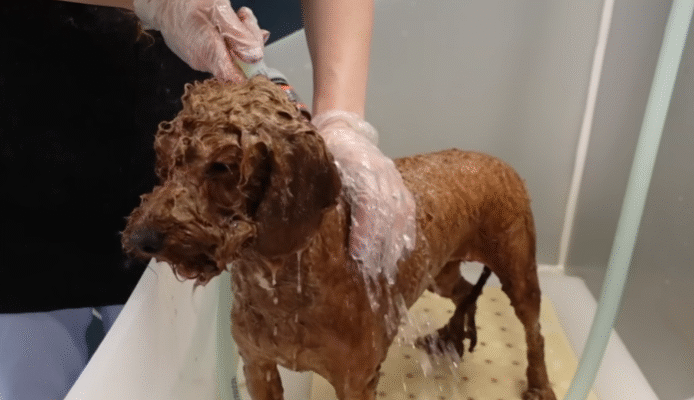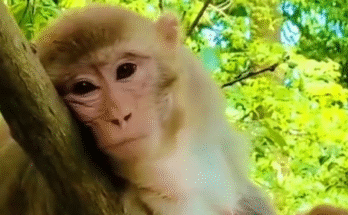
When we first saw him, it was hard to even recognize what breed he was. From a distance, he looked more like a small, tangled bush than a living dog. His fur wasn’t just long—it was a solid, matted shell wrapped so tightly around his body that it pulled at his skin with every movement. His eyes were hidden beneath layers of knots, his paws swollen from matting, and his tail was nothing but a stiff rope of hardened fur. He moved slowly, with small, uncertain steps, wincing every time a clump tugged painfully at his skin.
This was the poodle we had been called to rescue.
The homeowner who contacted us explained that the dog had been neglected for months—possibly even years. His coat had never been brushed, never trimmed, never cared for. What began as simple tangles eventually turned into mats, and those mats merged into thick, heavy armor that trapped dirt, moisture, and even insects. The weight of it all pulled on his joints and made every movement a struggle. You could see the exhaustion in his posture, the defeat in his eyes.
But underneath all that fur, beneath all those knots and layers of painful matting, we knew there was a dog waiting to be free.
When we brought him into the grooming room, the moment the door closed, he froze completely. He didn’t bark, growl, or resist. He simply stood there, as if he had learned that movement only caused more pain. His breathing was shallow, his body trembling ever so slightly—a silent cry for help from a dog who had forgotten what comfort even felt like.
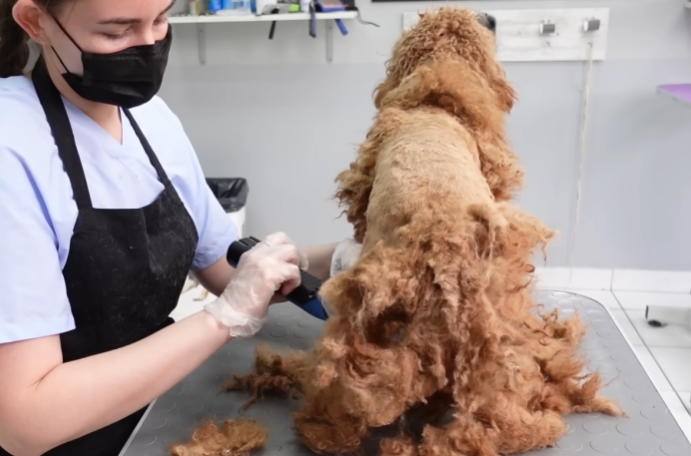
The groomers approached slowly, speaking softly, letting him sniff their hands. He didn’t react much, but it was clear he wanted to trust—he just didn’t know how anymore. His fur was so severely matted that even touching it made him flinch.
We laid him gently on the grooming table and began the long, careful process of shaving away the mats. This wasn’t a quick job. It wasn’t even a simple grooming session. It was a rescue operation.
The first pass of the clippers made a low buzzing sound as they sliced through the hardened layer of fur. A massive clump fell onto the table with a heavy thud. It was unbelievable to think that something like that had been attached to him—pulling, pressing, suffocating his skin for so long.
Piece by piece, layer by layer, the mats came off. Some were so thick they looked like pieces of felted carpet. Others were so tightly wrapped around his legs that we had to slide the clippers underneath with extreme precision, making sure not to nick his skin.
With each chunk that fell, his tiny frame underneath began to reveal itself.
We discovered open sores hidden beneath the mats—places where the skin had been rubbed raw from the friction, places where moisture trapped under the fur had caused infections. His nails were overgrown and curled. His backside was so matted that he couldn’t relieve himself properly, making terrible messes that had clung to his fur.
But through it all, he remained still. Not because he was calm, but because he was tired—too tired to fight, too tired to fear, too tired to care what happened next.
Then something beautiful happened.
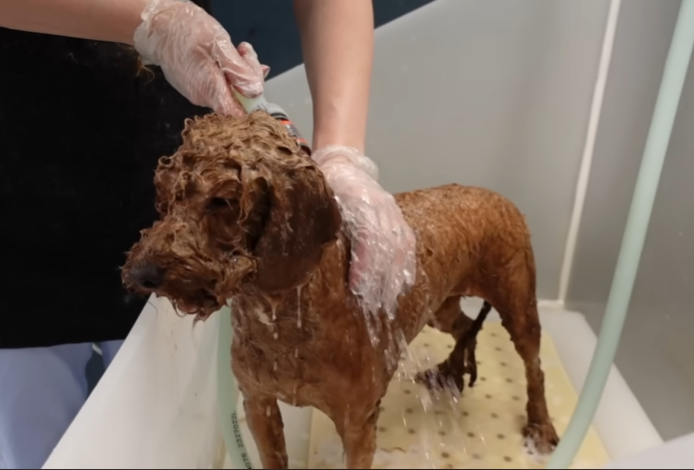
As we continued shaving the mats off his face, his eyes finally became visible. When the fur around them fell away, he blinked rapidly, adjusting to the light as if he hadn’t seen clearly in months. He looked around the room, confused at first, then… curious. Those eyes—small, soft, and gentle—held the first spark of hope we had seen in him.
With every mat removed, he stood a little taller. His breathing became steadier. He shifted his weight more comfortably. It was as if the weight of the world—literally—was being lifted from him.
By the time we finished shaving the last mat, he looked like a completely different dog. Thin, yes—shockingly thin. His body had been hiding beneath layers of fur that disguised just how much weight he had lost. But he also looked younger, freer, and so much lighter.
We wrapped him in a warm towel and held him close. For the first time since his rescue, he leaned into us—hesitant at first, then fully, letting his head rest on our arm. It was as if he finally realized he was safe.
After his bath, he stood on the floor and shook his body, sending droplets of water scattering everywhere. His skin, now free from the tight oppression of the mats, moved naturally for the first time. He stretched—slowly at first, then deeper—discovering sensations he had long forgotten. And then, after taking a few tentative steps, he did something that made every person in the room smile:
He wagged his tail.
It was a small wag, a gentle sway rather than an excited shake. But it was full of meaning. It was the sign we had been waiting for—proof that the freedom he now felt was sinking in.
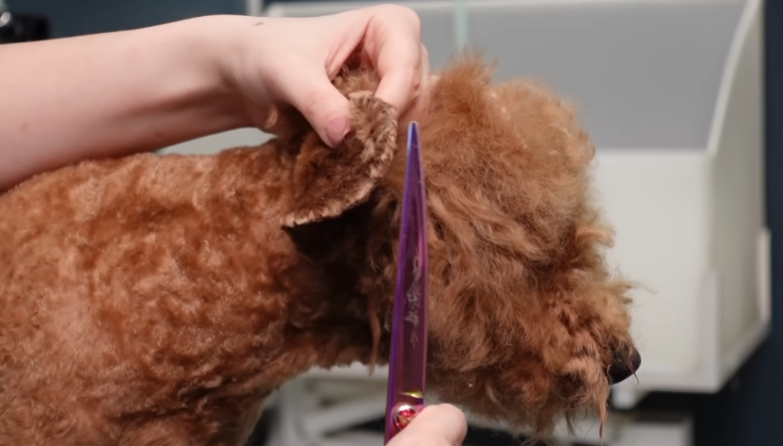
We gave him a nutritious meal, soft on his stomach, and he ate ravenously. As he finished and looked up at us with grateful eyes, we knew this dog was ready to start over.
The following days were filled with changes. His skin began to heal. His sores were treated, his nails trimmed to a healthy length, and his appetite returned. He started to show personality—following us around, tilting his head curiously when we spoke to him, and curling up in soft blankets as if rediscovering the joy of warmth and comfort.
His transformation was astonishing—not just physically, but emotionally. The scared, silent dog who came to us under a blanket of painful mats had become a sweet, affectionate companion who loved gentle touches and soft words.
And then came the moment no one expected.
A week after his rescue, he saw himself in a mirror—his first clear reflection in who knows how long. He startled at first, then leaned closer. His tail wagged again—this time faster, more confident. As if he, too, was amazed by how he looked now.
You wouldn’t believe it unless you saw it yourself. The dog once buried under a mountain of mats now stood proudly with smooth, fresh-cut fur, bright eyes, and a lightness in every step.
All it took was kindness, patience, and a shave that changed everything.
He didn’t just look like a different dog—
he felt like one.
